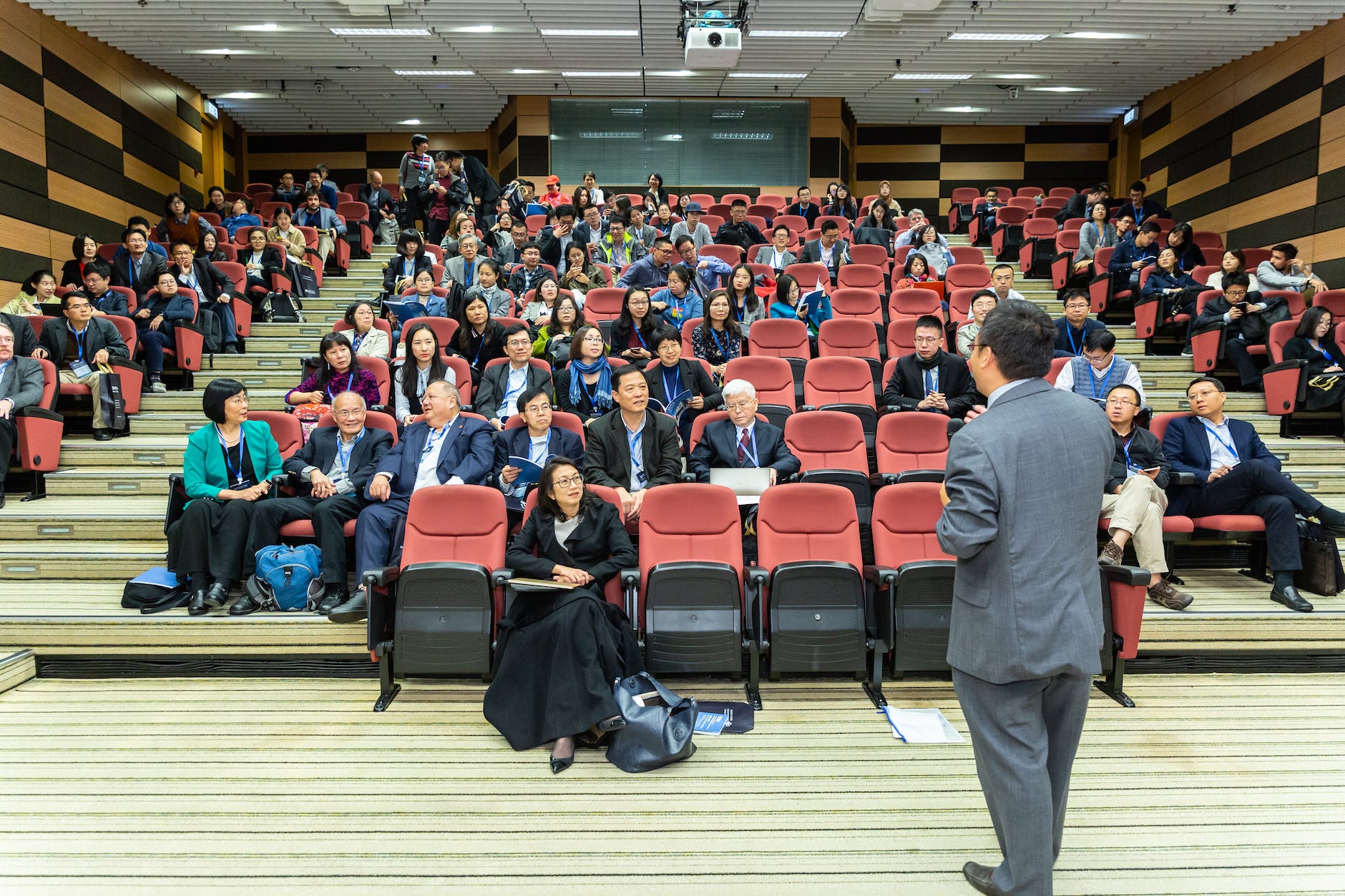Presenting your research work is an essential part of the academic and scientific process. It allows you to communicate your findings to a wider audience, receive feedback on your work, and potentially open doors for future collaborations or opportunities.
However, presenting your research can also be a challenging task, especially if you’re not used to public speaking or presenting your work to others. Here at iLovePhD, you can find out everything you need to know to prepare and present your research work.
The Ultimate Guide to Mastering Thesis Research Presentations: Proven Strategies for a Winning Delivery

7 Types of Research Presentations
There are several types of research presentations that are commonly used in academic and professional settings. Some of the most common types of research presentations are:
- Conference presentation: This type of presentation is delivered at a conference or symposium where researchers and academics share their work and ideas with a wider audience.
- Poster presentation: This type of presentation is a visual display of research findings that are typically presented at conferences or other academic events. Posters can be used to present research in a concise and visually appealing way.
- Oral presentation: This type of presentation is delivered in person, usually using visual aids such as slides or handouts. Oral presentations are often used to share research findings or to persuade an audience of a particular point of view.
- Webinar presentation: This type of presentation is delivered online, typically using video conferencing software. Webinars are a convenient way to reach a large audience and to facilitate discussion and collaboration among participants.
- Video presentation: This type of presentation is a pre-recorded video that can be shared online or shown at an event. Video presentations are a useful way to present research findings or to explain complex concepts in a visually engaging way.
- Ignite presentation: This type of presentation consists of a series of 20 slides, each displayed for 15 seconds, for a total presentation time of five minutes. Ignite presentations are designed to be fast-paced and engaging and can be used to share research findings or to pitch a new idea or project.
- Lightning talk: This type of presentation is a brief, focused presentation that typically lasts between 5 and 10 minutes. Lightning talks are often used to introduce a new concept or to provide an overview of research findings.
8 Strategies to Improve Spoken Technical English

Improving your spoken technical English can be made easy with dedication and practice. Here are some strategies that you can use to improve your spoken technical English:
- Expand Your Vocabulary: One of the best ways to improve your spoken technical English is to increase your vocabulary. You can do this by reading technical articles and books, listening to technical podcasts, and watching technical videos.
- Practice with Native Speakers: One of the best ways to improve your spoken technical English is to practice with native speakers. This will help you to become more comfortable with the language, and you will also get feedback on your pronunciation and grammar.
- Listen to Technical English: To improve your spoken technical English, it’s important to listen to others speak the language. This will help you to become familiar with the tone, rhythm, and intonation of technical English. You can listen to technical podcasts, watch technical videos, and attend technical seminars.
- Speak Slowly and Clearly: When speaking technical English, it’s important to speak slowly and clearly. This will help ensure that your message is understood and that your pronunciation is correct.
- Use Technical Vocabulary: Using technical vocabulary is important when speaking technical English. This will help you to communicate more effectively and show your understanding of technical concepts.
- Record Yourself: Recording yourself can help you to identify areas where you need to improve. You can listen to your recordings and identify areas where you need to work on your pronunciation, grammar, and vocabulary.
- Join Technical English Groups: Joining technical English groups can be a great way to practice your spoken technical English. You can join online groups, attend meetups or conferences, and participate in technical forums.
- Seek Professional Help: Finally, if you’re struggling to improve your spoken technical English, seek professional help. A language tutor or speech coach can provide you with personalized feedback and help you to improve your spoken technical English.
11 Best Practices for a Good Presentation

iLovePhD presented you with some useful tips and guidelines on how to present your research work effectively so that you can confidently share your findings with your peers and colleagues. Presenting your research work can be done in various ways depending on the context and audience. Here are some best practices for creating and delivering effective presentations:
- Determine your audience: Consider who will be attending your presentation and what their background knowledge is. This will help you tailor your presentation to their needs and interests.
- Choose your presentation format: There are several formats to choose from such as oral presentation, poster presentation, or written report. Choose the format that best suits your research and your audience.
- Create an outline: Develop an outline of your presentation. It will help you organize your thoughts and ensure that your presentation flows logically.
- Define your objective: Define the purpose and objective of your presentation. What message do you want to convey? Once you have a clear objective in mind, you can structure your presentation accordingly.
- Structure your presentation: Start with an introduction that includes a brief overview of your research question, followed by the methods you used, the results you obtained, and finally, your conclusions.
- Use visual aids: Use visuals such as images, videos, and graphs to help convey your message. Visuals can help keep your audience engaged and make complex information easier to understand.
- Keep it simple: Avoid using jargon or technical terms that your audience may not understand. Keep your language simple and straightforward, and use examples and anecdotes to illustrate your points.
- Practice your delivery: Practice your presentation several times before you present it. This will help you feel more comfortable and confident, and it will help you identify any areas where you need to improve. Engage your audience: Engage your audience by asking questions, soliciting feedback, or using interactive elements such as polls or quizzes.
- Be mindful of your body language: Be aware of your body language when presenting. Make eye contact with your audience, use appropriate hand gestures, and try to avoid nervous movements such as pacing or fidgeting.
- Stay within your time limit: Be mindful of your time limit and try to stay within it. Keep your presentation focused and avoid going off on tangents.
- Close with a call to action: End your presentation with a clear call to action. What do you want your audience to do next? Encourage them to take action and follow up with you if they have any questions. This will help reinforce the main takeaways of your research for your audience.
By following these best practices, you can create and deliver effective presentations that engage your audience and help you achieve your objectives. Presenting your research work is an opportunity to share your findings and knowledge with others, so be enthusiastic and confident in your delivery.
Conclusion
In conclusion, presenting research work effectively is a crucial skill for researchers, students, and professionals alike.
To deliver a successful presentation, one should start with a clear and concise introduction that captures the audience’s attention, and then provide a thorough and organized overview of the research problem, methodology, and findings.
Visual aids such as graphs, charts, and images can enhance the presentation and help convey complex information effectively.
It is also important to practice the presentation beforehand, keeping in mind the audience’s background and interests, and to anticipate potential questions or challenges.
Engaging with the audience, answering questions confidently, and being open to feedback can help create a positive impression and facilitate knowledge exchange.
Overall, a well-structured, engaging, and informative presentation can help disseminate research findings, establish credibility, and facilitate collaborations and partnerships in the scientific community.
Also Read: Tips to Prepare PhD viva-voce Presentation Slides


